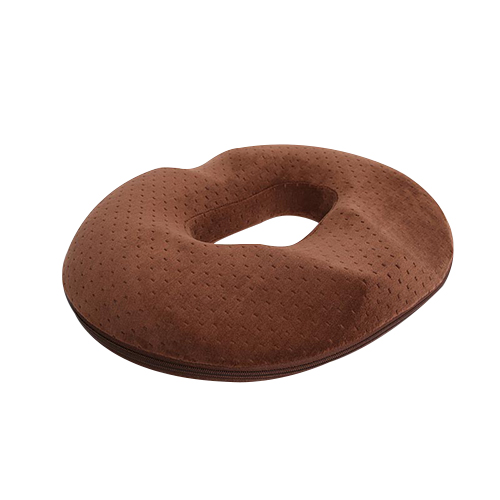What Makes a Memory Foam Cushion a Smarter Seating Choice Today?
2025-11-19
A Memory Foam Cushion is a modern seating solution designed to improve daily comfort by conforming to the natural curves of the human body. It is crafted from viscoelastic foam known for its slow-rebound performance, meaning the cushion gradually returns to its original shape after pressure is removed. This responsiveness allows the cushion to distribute weight evenly, reduce targeted stress on specific areas, and enhance posture alignment.
The core goal of using a Memory Foam Cushion is to minimize discomfort caused by prolonged sitting—whether in office chairs, car seats, wheelchairs, or home settings. As more consumers become aware of posture-related problems, the demand for ergonomic cushions has grown consistently. This article explores what a Memory Foam Cushion is, why it is beneficial, how it works, and what future trends are shaping its development.
Key Product Parameters of a High-Quality Memory Foam Cushion
(Using one table to present professional parameters as required)
| Parameter | Specification |
|---|---|
| Material | Premium viscoelastic polyurethane foam |
| Density | 45–60 kg/m³ (medium to high density for balanced comfort) |
| Hardness Level | 8–12 KPa slow rebound |
| Rebound Time | 3–5 seconds |
| Shape Options | Square, ergonomic U-shape, wedge structure, round |
| Cover Material | Breathable polyester, cotton blend, or mesh |
| Cover Features | Removable, washable, skid-resistant bottom |
| Cushion Size | 40–45 cm length × 35–40 cm width |
| Thickness | 5–10 cm depending on usage scenario |
| Temperature Response | Adapts to body heat for improved contouring |
| Target Users | Office workers, drivers, elderly adults, wheelchair users |
| Safety Standards | Odor-free, non-toxic, CertiPUR-US compliant |
This overview serves as the foundation of the discussion that follows, presenting clear details for consumers comparing product specifications in today’s market.
Why Is a Memory Foam Cushion Becoming a Popular Choice?
The growing adoption of Memory Foam Cushions can be attributed to modern lifestyle habits. With increased hours spent sitting due to remote work, long commutes, and digital entertainment, pressure-related discomfort has become a common challenge. For many, posture support is no longer optional but necessary for maintaining long-term health.
Why Does Memory Foam Provide Better Comfort?
Because the foam adapts to body heat and molds itself to the user’s shape, it minimizes pressure points, especially in the hips, lower back, and tailbone areas. Traditional cushions, such as fiber-filled or sponge cushions, compress easily and fail to distribute weight evenly. Memory foam, on the other hand, offers consistent cushioning and a more customized fit.
Why Is Weight Distribution Important?
Uneven sitting pressure can lead to discomfort, poor blood circulation, and posture misalignment. Over time, this can cause tension in the spine, hips, and knees. A Memory Foam Cushion distributes weight uniformly, supporting natural alignment and reducing the impact of prolonged sitting.
Why Do Office Workers, Drivers, and Elderly Adults Prefer Memory Foam?
Because each group experiences prolonged static posture, which increases the risk of discomfort and fatigue. The cushion relieves pressure during long work hours, extended driving, and everyday sitting routines.
Why Are Ergonomic Features Driving New Consumer Behavior?
Modern consumers increasingly seek health-oriented lifestyle products. The combination of ergonomic design and slow-rebound technology meets this need by providing both comfort and long-term usability.
How Does a Memory Foam Cushion Work and How Does It Improve Posture and Comfort?
A Memory Foam Cushion works through an adaptive response mechanism triggered by temperature and pressure. When the user sits, the foam softens slightly due to body heat and shapes itself to create a customized support surface. The deeper the contouring, the more evenly the body weight is distributed.
How Does Slow-Rebound Technology Create Support?
Memory foam gradually returns to its original form after pressure is released. This slow rebound prevents sudden flattening or sagging, which is a common issue in traditional cushions. The consistency helps maintain a stable seating surface and long-term durability.
How Does It Improve Posture Alignment?
Posture correction happens because the cushion guides the pelvis into a neutral position, reducing slouching and spinal strain. For users who sit for extended hours, this improvement can reduce lower back pressure and enhance overall comfort.
How Does Ventilation Technology Enhance User Experience?
Breathable covers, ventilation holes, and temperature-responsive foam help regulate airflow. This reduces heat accumulation, especially during long sitting periods or in warm environments.
How Does Design Shape Functionality?
Different shapes deliver different benefits:
-
U-shaped cushions: Reduce pressure on the tailbone.
-
Wedge cushions: Support hip tilt for upright posture.
-
Round cushions: Used for general comfort in home or office settings.
-
Square cushions: Offer universal coverage for car or office seats.
How Does Durability Affect Long-Term Value?
High-density foam cushions resist deformation and remain supportive after months or years of use. This makes them cost-effective compared to cheaper, fast-wearing alternatives.
What Future Trends Will Define the Memory Foam Cushion Market?
The Memory Foam Cushion market continues to evolve with new materials, improved manufacturing technologies, and increased consumer emphasis on ergonomic wellness. Several trends are expected to shape future product development:
Trend 1: Eco-Friendly Materials
Consumers increasingly look for cushions made from low-VOC, environmentally responsible foam. This trend pushes manufacturers to adopt safer technologies and sustainable production methods.
Trend 2: Breathability and Heat Management
Future cushions may integrate cooling gel layers, upgraded air channels, or thermoregulating fabrics to combat discomfort from heat buildup.
Trend 3: Customizable Ergonomic Designs
More brands are introducing cushions with adjustable height layers, modular support components, or shape variations tailored to specific health needs.
Trend 4: Hybrid Cushion Technologies
Combining memory foam with latex, gel, or rebound foam can create hybrid structures offering better resilience and ventilation.
Trend 5: Increased Focus on Posture Health
As posture-related discomfort becomes more commonly discussed, demand for scientifically backed ergonomic solutions will rise.
Trend 6: Smart Cushion Development
Pressure-sensing systems, posture alerts, and temperature adjustments may become mainstream in high-end models.
These trends indicate a clear direction: Memory Foam Cushions will continue to evolve as essential wellness accessories for modern lifestyles.
Common FAQs About Memory Foam Cushions
Q1: What makes a Memory Foam Cushion different from a regular cushion?
A Memory Foam Cushion adapts to body heat and pressure, creating a customized contouring effect. This helps distribute weight evenly and reduces pressure points, while regular cushions flatten quickly and lose support.
Q2: How long does a Memory Foam Cushion typically last?
A high-quality cushion with medium-to-high density foam can last between 2 to 4 years, depending on usage frequency and maintenance. Cushions with lower density may wear out faster and lose their supportive function.
Q3: How should a Memory Foam Cushion be maintained?
It should be kept clean by using its removable and washable cover. The foam itself should not be machine-washed; instead, it can be spot-cleaned with mild detergent and air-dried completely before use.
Conclusion and Contact Information
Memory Foam Cushions have become an essential comfort solution for office settings, travel, home use, and specialized ergonomic support needs. As modern lifestyles shift toward longer sitting hours and increased awareness of posture health, consumers continue seeking cushions that deliver consistent support, better weight distribution, and improved durability. With rising market demand and evolving trends in eco-friendly materials, ventilation, and ergonomic customization, Memory Foam Cushions are positioned for continued growth.
Zhehe is committed to offering high-quality Memory Foam Cushion products designed with ergonomic precision, durable materials, and user-focused comfort enhancements. For inquiries, customization requests, or further product details, contact us to learn more and explore available solutions.



